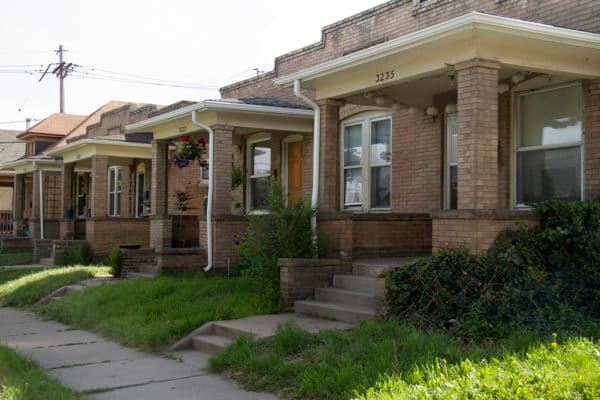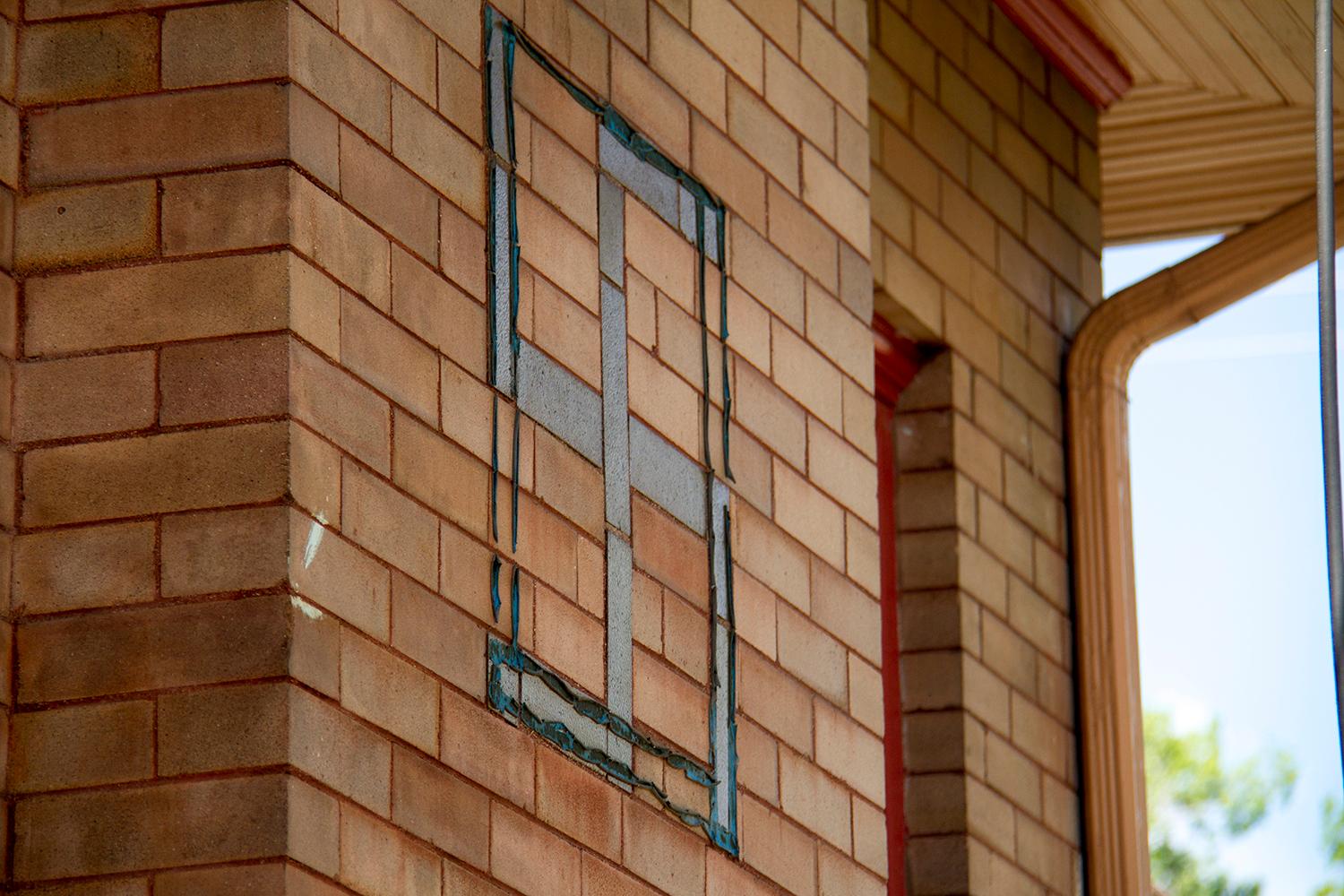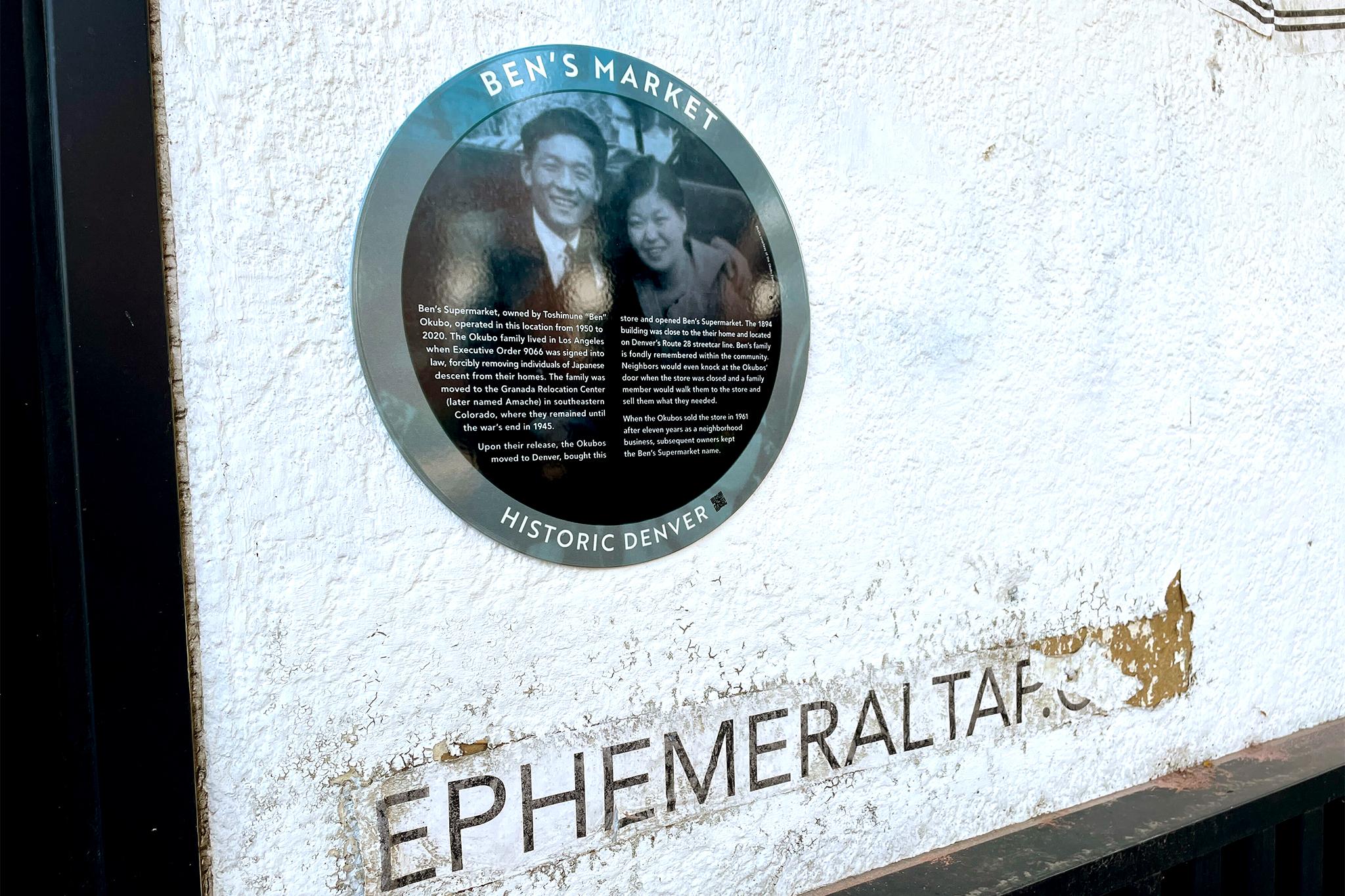
What is a swastika doing inlaid in the brick of a Highland home?
The duplex at 3233 and 3235 Irving Street was built in 1910 for $5,000, according to building permits. That was long before the image came to be associated with the Nazi Party and anti-Semitism.
The man who built the structure was Carl Bloom, a Denver bricklayer who lived from about 1851 to 1930. He built another home in 1909, 3223 Irving Street, 40 feet down the block, that bears the same symbol along a side wall.
Neighbors on the block think it may have been an homage to American Indian iconography. In the early 19th century, especially in the American southwest, the symbol we call a swastika was an image associated with American Indians, especially the Navajo.
Retired Indian Studies Professor Rick Williams said that could be true.
"There was a fascination with American Indian people because basically, [settlers] came to the realization that it was going to be a time when Indian people didn't exist anymore," he said.
But Williams doesn't know of any broader trend to decorate homes with American Indian symbols during that time.

Denver historian Phil Goodstein said American Indians would've been "hated or ignored" during that time in the city's history. Nor did Goodstein know of any widespread fashion to decorate homes with these symbols. Historic Denver Researcher Becca Dierschow said she hasn't heard of any such trends, either.
Perhaps instead, a clue can be drawn from Bloom's Swedish heritage. Bloom immigrated from Sweden in about 1882, according to the U.S. Census, and was living in the city by 1900, city directories say.
And the symbol that we know as a swastika was also known as Thor's Hammer among the Norse.
In 1872, the symbol made an appearance in Mårten Eskil Winge's painting Tor's Fight with the Giants. During that time, not only was Norse mythology popular, but swastikas were "in architectural decoration and in various logos."
Our Denver bricklayer Carl Bloom would have been in his 20s during the resurgence of Norse symbolism in Sweden. Decades later, perhaps he chose to honor his heritage when he built the two properties.
That's where the trail ends, though. Bloom was widowed by 1910, and efforts to find any other relatives were unsuccessful.
What's it like to live in a home with such a notorious symbol? Neither the residents nor the property owners could be reached before the publication of this piece.
But next time you walk by, maybe you'll see a "quintessential" good luck charm instead of an ugly relic of anti-Semitism.













